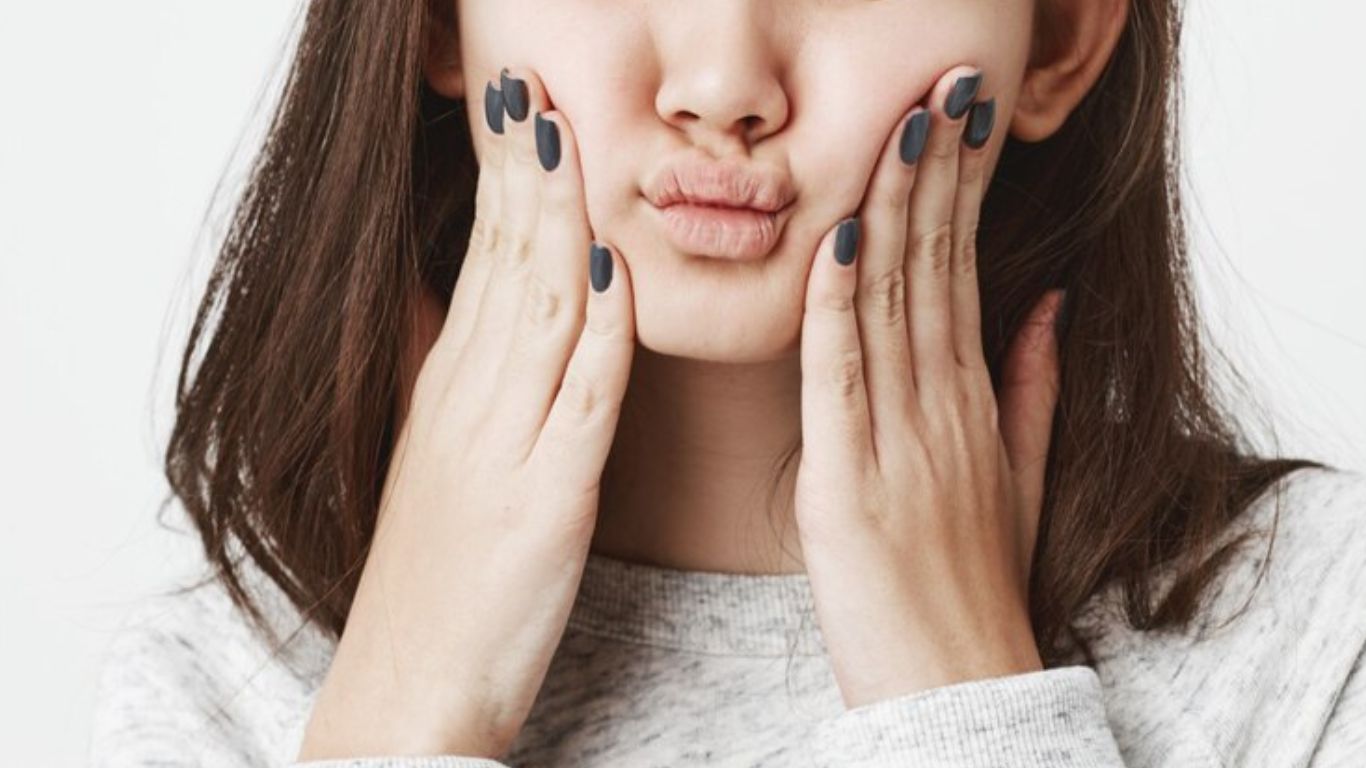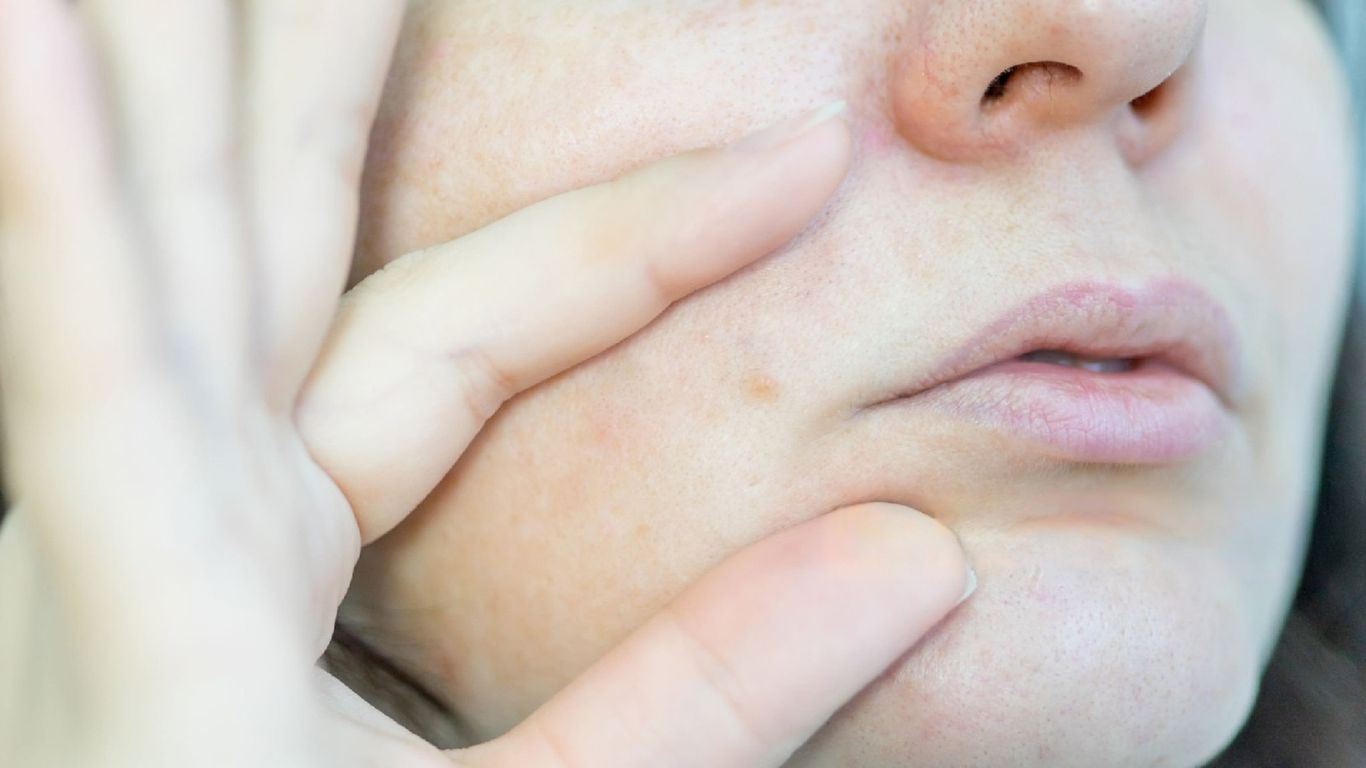While our skin is the body’s largest organ and often receives significant attention in our skincare routines, the skin inside our mouths — particularly on our cheeks — tends to be overlooked. However, just like any other skin, the inside of our cheeks can accumulate dead skin cells. This article aims to provide insights and solutions on how to effectively and safely get rid of dead skin inside the cheeks, promoting overall oral health.

Understanding the Phenomenon
Dead skin inside the cheeks can manifest as a whitish layer, sometimes causing a peeling sensation. This can be attributed to a variety of reasons:
- Mild Trauma: Biting the inside of your cheek, either accidentally or out of habit, can cause dead skin to build up.
- Toothpaste and Mouthwashes: Some oral care products contain ingredients that may irritate the mucous membrane, leading to sloughing.
- Medications: Certain medicines can affect the skin’s renewal process or cause dryness, resulting in peeling skin inside the mouth.
- Underlying Medical Conditions: Conditions like oral lichen planus or oral thrush can also cause skin peeling inside the mouth.

Steps to Get Rid of Dead Skin Inside Cheeks
1. Maintain Oral Hygiene
Proper oral care is crucial. Brush your teeth twice a day using a soft-bristled toothbrush, ensuring gentle circular movements. Over-aggressive brushing can cause trauma. Floss daily and rinse with an alcohol-free mouthwash to maintain a balanced oral pH.
2. Stay Hydrated
Drink plenty of water throughout the day. Hydration aids in the natural exfoliation process and keeps mucous membranes moist.
3. Opt for Mild Oral Care Products
If you suspect your toothpaste or mouthwash is the culprit, consider switching to products designed for sensitive mouths. Avoid products with sodium lauryl sulfate (SLS), which can cause irritation in some individuals.
4. Humidify Your Environment
Using a humidifier, especially in dry climates or during winter, can help maintain moisture in the mucous membranes, preventing skin peeling.
5. Reduce Trauma
Avoid biting the inside of your cheeks. If it’s a habitual issue, consider chewing gum or using other distractions to keep your mouth occupied. Ensure your teeth are smooth, with no sharp edges or broken fillings that can cause constant irritation.
6. Diet and Nutrition
Vitamin deficiencies, especially B vitamins and iron, can impact oral health. Ensure a balanced diet with fresh fruits, vegetables, whole grains, lean proteins, and dairy. If needed, discuss vitamin supplementation with your healthcare provider.
7. Avoid Irritants
Limit intake of extremely hot, spicy, or acidic foods that can exacerbate the peeling. Also, minimize alcohol and tobacco use, both known irritants to the oral cavity.
8. Oral Gel or Saline Rinse
Using an oral gel can offer relief from irritation and promote healing. Alternatively, rinsing your mouth with warm saline water can also be soothing and help in the natural exfoliation process.
9. Consult a Dentist
If the problem persists, or if you notice other symptoms like pain, redness, or bleeding, it’s essential to see a dentist. They can provide insights into any underlying issues and recommend treatments.
Preventive Tips
1. Regular Dental Check-ups
Schedule regular dental check-ups at least twice a year. A professional cleaning can help maintain oral health, and dentists can detect potential problems early on.
2. Stay Informed
Read the labels of oral care products. If you notice irritation after using a particular product, try switching brands or formulations.
3. Manage Stress
Stress can manifest in many ways, including biting the inside of your cheeks. Find stress-relief techniques that work for you, such as meditation, deep breathing exercises, or physical activity.
4. Be Cautious with New Medications
If you notice oral changes after starting a new medication, consult with your healthcare provider. They might adjust the dose or suggest an alternative.

Conclusion
The skin inside our mouths is delicate and requires proper care to remain healthy. Dead skin inside the cheeks can be a mild issue rectified with simple solutions, or it can indicate an underlying condition. By maintaining good oral hygiene, staying hydrated, and being mindful of potential irritants, you can keep your oral cavity in top shape. And remember, always consult with a healthcare or dental professional if you have persistent or concerning symptoms.
Frequently Ask Questions
Dead skin can accumulate due to mild trauma (like biting the inside of the cheek), certain toothpaste and mouthwash ingredients, specific medications, or underlying medical conditions like oral lichen planus or oral thrush.
Yes, some toothpaste ingredients, especially sodium lauryl sulfate (SLS), can irritate the mucous membrane, leading to skin peeling.
Drinking sufficient water aids the natural exfoliation process and keeps mucous membranes moist, preventing skin peeling.
Yes, deficiencies in certain vitamins, especially B vitamins and iron, can impact oral health and contribute to skin peeling inside the mouth.
Certain medications can affect the skin’s renewal process or cause dryness in the mouth. If you notice changes after starting a new drug, consult your healthcare provider.
Maintaining the skin inside the mouth might seem like a unique concern, but with the right care and habits, you can ensure a healthy oral environment. Always prioritize your oral hygiene and be mindful of potential irritants.
